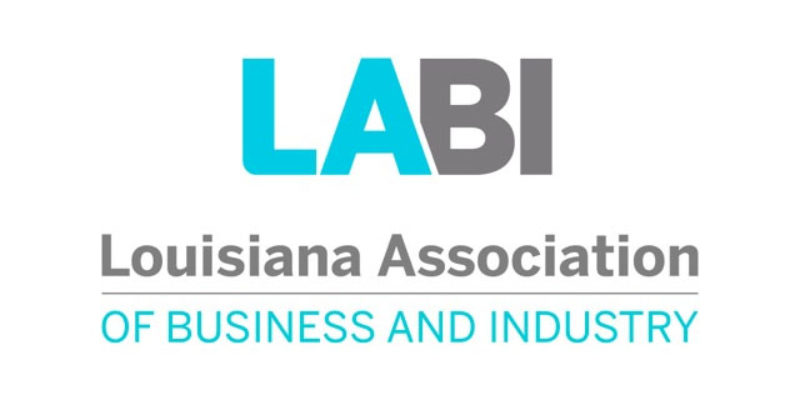The Louisiana Association of Business and Industry (LABI) released the first installment in a research series developed to help the public understand the Louisiana state budget, the reasons for the deficit, and potential solutions for government to prioritize spending and promote economic growth and individual prosperity.
“Budget Basics No. 1 – Understanding the State Budget Deficit” consists of 14 easy-to-understand charts accompanied by facts, data, and brief findings available at www.labi.org/budget-basics. This resource is available to LABI members, employers, and citizens across the state.
“Employers and taxpayers across Louisiana have been reading about recurring deficits and state budget challenges for years,” said Stephen Waguespack, President of LABI. “Today, LABI is pleased to introduce a simple guide to help explain the state budget and why the deficit persists. In future installments of ‘Budget Basics,’ LABI will offer research-based solutions to the state’s budget challenges for the new Legislature and Governor to consider in 2016 that will encourage both smarter government and a stronger economy.”
Major findings of “Budget Basics No. 1” include:
- The Louisiana state budget has grown by 44 percent since 2005. Contrast this figure with the state’s Gross Domestic Product, which grew 25 percent.
- While the state budget peaked in Fiscal Year 2008 in the aftermath of Hurricanes Katrina and Rita, short-term fixes have essentially maintained the general size of state government from Fiscal Year 2011 until the current year.
- Annual deficits persist as a result of three major factors: revenue, spending, and the budget structure.
Revenue
- Three seismic events resulted in a perfect storm for the state budget in 2008 and 2009: 1) the end of temporary economic growth and federal recovery funds following Hurricanes Katrina and Rita; 2) the onset of the national recession; and 3) large tax cuts to individuals granted through the reversal of “the Stelly plan.” Personal income tax collections alone dropped more than $1 billion between Fiscal Year 2008 and Fiscal Year 2010. Corporate income and franchise tax revenues also dropped $400 million during this period.
- While some have suggested that corporate tax exemptions are solely responsible for the state’s budget challenges, the data suggests a combination of factors are at play for the growth in tax exemptions, which totaled $7.7 billion in Fiscal Year 2014. Sales tax exemptions and individual tax exemptions are the most widely utilized of all revenue categories, totaling roughly $5 billion and representing more than two-thirds of all tax exemptions. Individual tax exemptions grew more than 100 percent over the past five years, while corporate tax exemptions grew 27 percent.
- The amount of taxes, licenses, and fees collected by Louisiana state government are projected to increase over the next five years, even as state economists predict more deficits as well.
Spending
- Louisiana spends an estimated $5,577 per person each year, ranking No. 16 nationally according to the U.S. Census Bureau. Louisiana’s local government also spends an average of $4,931 per person each year, ranking No. 13 nationally. Taken together, Louisiana’s state and local government spends an amount equivalent to roughly 20 percent of the state’s GDP each year.
- As is widely reported, some areas of the state budget have received disproportionate spending reductions in recent years as a result of Louisiana’s failed budget structure. In contrast, other expenditures continue to rise disproportionately ever year. From Fiscal Year 2005 to Fiscal Year 2015, top examples of State General Fund spending growth include 154 percent increase in Medicaid spending, 88 percent increase in TOPS and financial aid, 83 percent increase in the annual employer contribution to state worker retirement, 77 percent increase in supplemental pay to local law enforcement, 54 percent increase in the Judiciary budget, 38 percent increase in K-12 school funding, and 24 percent increase for prisons.
- In short, the cost of services provided by government are growing faster than state revenues. Expenditure growth between Fiscal Year 2016 and 2017 is nearly 14 percent while revenue growth is less than five percent. The delta is the state deficit projected for next year: $713 million.
Budget Structure
- Compounding the recurring deficit is the fact that most of Louisiana’s state budget is considered “off-limits” to annual review or reductions. The Constitution requires certain spending ($6 billion). State agencies charge fees for services ($2.3 billion). Nearly 400 dedications of revenue exist in state law and the Constitution ($3.8 billion).
- “Budget Basics No. 2” will focus on all three forms of locked-up state funding, which total roughly two-thirds of the entire state budget.
“The state budget is complicated and fixing the state’s fiscal challenges is an enormous – but not impossible – challenge,” said Waguespack. “The causes of the deficit, however, are clear. The state has a revenue problem. The state has a spending problem. And the state has fundamental problems with the structure of the budget itself. All three of these components will have to be addressed in a smart, strategic way to overcome long-standing issues that have cyclically plagued Louisiana for decades. LABI looks forward to offering data-driven recommendations for budget solutions in the weeks and months ahead.”
Research for “Budget Basics” began immediately after the conclusion of the 2015 legislative session. LABI consulted with experts and gathered data from the public and private sector in preparing this analysis, including the Public Affairs Research Council of Louisiana, the National Association of State Budget Officers, fiscal staff in the Louisiana Legislature, the Louisiana Department of Revenue, and the Louisiana Division of Administration, among others.
The “Budget Basics” research series addresses one of the six strategies of the CASE Agenda. The Coalition for A Stronger Economy (CASE) launched in September 2015 with 65 statewide organizations, chambers of commerce, trade associations, and civic groups representing nearly every corner of Louisiana. The CASE Agenda and signatories are online at www.labi.org/CASE. Relevant reports and research from CASE organizations on the six strategies, such as “Budget Basics,” are added to the site on an ongoing basis.
Advertisement
Advertisement

